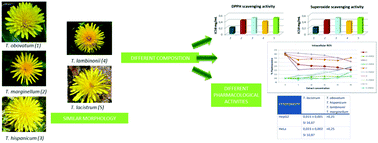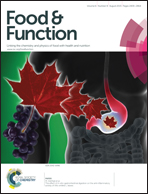The effect of five Taraxacum species on in vitro and in vivo antioxidant and antiproliferative activity
Abstract
Plants belonging to the genus Taraxacum are considered a nutritious food, being consumed raw or cooked. Additionally, these plants have long been used in folk medicine due to their choleretic, diuretic, antitumor, antioxidant, antiinflammatory, and hepatoprotective properties. This genus, with its complex taxonomy, includes several species that are difficult to distinguish. Its traditional use must be related not only to T. officinale F.H. Wigg., the most studied species, but also to others. The aim of this work is to compare five different common South European species of Taraxacum (T. obovatum (Willd.) DC., T. marginellum H. Lindb., T. hispanicum H. Lindb., T. lambinonii Soest and T. lacistrum Sahlin), in order to find differences between antioxidant and cytotoxic activities among them. Dissimilarities between species in LC/MS patterns, in in vitro and intracellular antioxidant activity and also in the cytotoxicity assay were found. T. marginellum was the most efficient extract reducing intracellular ROS levels although in in vitro assays, T. obovatum was the best free radical scavenger. A relevant cytotoxic effect was found in T. lacistrum extract over HeLa and HepG2 cell lines.


 Please wait while we load your content...
Please wait while we load your content...